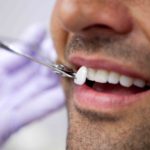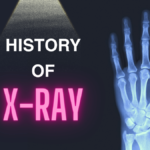Who likes acne, let alone acne scars? Acne isn’t something most people are proud of. They can be bothersome and embarrassing by many – and while there are many acne solution treatments offered at your local drug store, you might not know that these creams and medications may be hurting you instead of helping you. Shockingly these treatments tend to carry a long list of side-effects, because they usually contain poisonous chemicals and toxins they don’t mention to you when you buy it.
It’s so easy to become ashamed of our acne scars; but if you’re feeling like you are the only person on earth that is dealing with them, you’re absolutely not! We, humans, will at some point in our lives, develop acne; and every sufferer will have some form of scarring to show for it.
The best way to treat acne scars is choosing to use all natural ingredients and remedies. Though when choosing to buy acne treatments at a drugstore, it’s absolutely necessary for you to read the ingredients to make sure there are no use of any chemicals, toxins or contaminants. To better help you lighten those scars and gradually get rid of your acne scars permanently, natural ingredients are your best solution. So before we get started, let’s understand the basics of acne scars.
What is an acne scar?
Acne scars are what occurs at the end of the skin inflammation or acne. They are typically caused by skin pores engorged with excess oil, dead skin cells and bacteria. The pore swells, causing a break in the follicle wall. The infected acne destroys the solid skin tissue and this becomes a scar on the skin.
What types of acne scars are there?
Believe it or not, acne scars come in many shapes, sizes and even colors. They can be depressed or raised. Luckily, acne scars can be treated, and completely or partially removed from the skin. So what type of acne scars do you have? Find out below:
Depressed Acne Scars
These types of scars (also known as pitted) are known to be the most common. When you have inflammatory acne or papulopustular acne, depressed acne scars follow. Anything from red blemishes, pimples, papules and pustules (zits) and larger swollen lesions (nodules) are considered papulopustular acne. These types of scars typically sit on collagen rich scar tissue, which prevents the skin from repairing the indentation. Here are the three main types of scar that this form of acne leaves behind:
- Rolling Scars – When you have this type of scar, you see broad depressions in the skin, or shallow indentations in the skin. Rolling scars have rounded, sloping edges, hence the name ‘rolling scars’. Rolling scars lie under damaged skin, and often feels like a rough texture and a wavy or rippling appearance and they are the result of damage under the skin.
- Boxcar Scars – Boxcar scars can appear to be very similar to rolling scars however these scars have steep, defined edges and resemble chicken pox scars. They are quite deep and in many ways, they can resemble the print left on the skin from pushing a finger nail into it.
- Ice Pick Scars – Ice pick scars are deep and narrow (usually less than 2mm across). These types of scars resemble an indent like a large, empty pore on the skin. Ice pick scars unfortunately are the most difficult ones to cover up.
Raised Acne Scars
Though these types of scars are less common than depressed acne scars, they form similarly as described above. Unlike depressed acne scars, raised acne scars are a bit more obvious – and unfortunately due to that, it’s a bit tougher to treat these types of scars. Why? Instead of the skin living on the surface, there is also excess scar tissue on the surface. As a result these scars appear as a bumpy, uneven surface that catches the light.
Below are two main types of raised acne scars:
- Keloid Scars – Darker skin tones are more likely to form keloid scars. These scars are referred to “scars that don’t know when to stop.” They are seen to be a tough heaped-up scar that rises quite abruptly above the rest of the skin. Its starts when scar tissue forms on the skin in excess, as a result of excess collagen production. Collagen, used in wound repair, sometimes our bodies fail to level out the collagen, therefore producing a lump many times larger than that of the original scar.
- Hypertrophic Scars – Hypertrophic scars are what keloid scars would have been if the collagen production were to stop when the acne wound were filled. It is characterized by deposits of excessive amounts of collagen which gives rise to a raised scar – and similar to keloids, they form most often at the sites of pimples, body piercings, cuts and burns.
Now that we understand the low down of acne scars – how can we get rid of them? Here are 5 natural remedies to prevent and treat acne scars –
- Aloe Vera – Aloe Vera gel is a potent source of vitamins which can help to heal skin and fade scars. Aloe is gentle and calming, therefore it shouldn’t damage or irritate your skin. With the use of Aloe Vera, you will leave your skin looking and feeling softer and healthier.
For the best results, opt to using fresh Aloe Vera gel like substance directly from the Aloe Vera leaf than over the counter products containing Aloe Vera.
- Baking Soda – Baking soda is very versatile and is used many ways around the house, and because of that, is a great and convenient ingredient to use for many. Filled with sodium bicarbonate crystals, baking soda can be used to exfoliate the skin.
Easily mix together a few teaspoons of baking soda with enough water to form a thick paste then massage into skin where scars are present. Leave this paste on skin for about a minute or two. Afterwards, wash your face with warm water and lastly apply a good natural moisturizer.
- Apple Cider Vinegar – Apple cider vinegar is known for its powerful astringent and is a popular remedy use for many things such as acne.
Mix together water and apple cider vinegar and use a cotton ball or swab to dab into the mixture. Carefully apply directly on your acne scars.
- Honey – Honey is a great natural moisturizer which can work wonders on your acne scars. Try your best to avoid honey from grocery stores and instead opt to natural, raw honey.
Use honey directly over scars and leave on. Another way is to mix together some cinnamon and honey – these two will make a powerful combo.
- Lemon – Lemon is a great natural ingredient to use on acne scars, as well as to promote healing and revitalize skin.
Mix together a squeeze of an organic lemon and some water into a bowl. Using a cotton swab or ball, gently dab the juice over the scars and leave until dried completely. Afterwards, rinse your face with cool water and apply with a natural moisturizer. Repeat as needed.
Author Bio: Usman Raza is a freelance writer, marketing specialist at KeevaOrganics and co-founder of UsmanDigitalMedia.com. When not working, he’s probably spending time with his family. Follow him on Facebook and Twitter.












